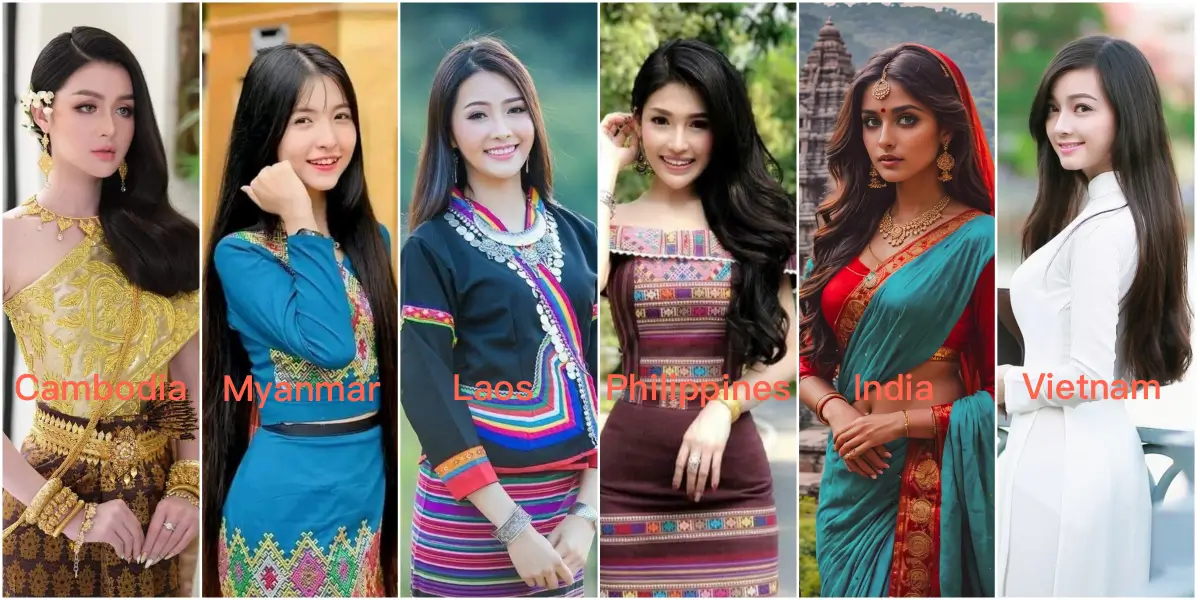Hair Type Guide: A Comparison of Popular Hair Origins

For professionals in the hair industry, knowing the origins and characteristics of popular hair types is vital for offering high-quality services and products tailored to clients' needs. Each hair origin has unique features, making them suitable for different styles, textures, and preferences. This guide compares some of the most sought-after hair types worldwide, empowering hair stylists, salon owners, and retailers to make informed decisions.
1. Brazilian Hair
Brazilian hair is a popular choice among customers, but its name is often misleading. While marketed for its thickness, versatility, and luxurious texture, Brazilian hair is rarely sourced from Brazil. Instead, companies use the name to describe hair with a specific feel and appearance. This labeling trend adds to the confusion in the market, where Brazilian hair is widely sought but does not come from traditional raw hair material sources.
2. Peruvian Hair
Like Brazilian hair, Peruvian hair is often labeled for marketing purposes rather than actual origin. Customers often believe this hair is sourced from Peru, but this is seldom the case. The name describes hair that is soft, lightweight, and voluminous, appealing to a global audience. However, most Peruvian hair in the market is sourced from Southeast and South Asian countries such as Vietnam and India. Educating consumers on these trends helps them make more informed choices.
3. Malaysian Hair
Malaysian hair is another example of a trend-driven label. Despite its sleekness and shiny appeal, this hair rarely originates from Malaysia. Instead, it often comes from other countries in the region but is marketed under the Malaysian name to highlight its smooth and refined qualities. This widespread mislabeling highlights the need for greater honesty in the industry, something our brand prioritizes.
4. Indian Hair
Indian hair is the most common raw material. Often sourced from temples in India, this hair is known for its natural luster and resilience. Unlike other mislabeled hair types, Indian hair maintains its authenticity in the market. However, even here, some companies falsely label hair as Indian to capitalize on its popularity. Ensuring true origin labeling is critical for maintaining trust with customers.
5. Burmese Hair
Burmese hair is known for its thickness, durability, and natural luster. Sourced from Burma (Myanmar), it typically has a coarse texture, making it versatile for styling and blending with different hair types. Its natural color ranges from dark brown to jet black, and it holds curls or waves exceptionally well. This hair type is popular for extensions and wigs due to its strength and longevity.
6. Laotian Hair
Laotian hair, sourced from Laos, is prized for its silky and smooth texture. It is usually straight or slightly wavy, with a fine-to-medium strand thickness. This hair type often comes in natural black or deep brown shades, reflecting its authenticity. Its soft yet resilient nature makes it a favorite for natural-looking extensions, especially for those seeking a lightweight, flowing appearance.
Cambodian hair is valued for its strength, coarseness, and versatility. Sourced from Cambodia, it comes in straight, wavy, or curly textures and is known for being lightweight yet durable. It naturally blends well with a variety of hair types due to its medium-to-thick strands. Cambodian hair is highly sought after for its ability to hold styles and its natural, low-maintenance appeal.
Vietnamese hair is renowned for its smoothness, natural shine, and straight texture. Sourced from Vietnam, it is usually thick but soft, with minimal tangling and shedding. The hair is often untreated, retaining its virgin quality, which allows for easy customization. Its natural beauty and strength make it a popular choice for sleek, long-lasting hairstyles.
Filipino hair is distinct for its fine-to-medium texture and natural straightness. It is often lightweight and silky, with a slightly glossy finish. The hair’s strands are usually soft, making it easy to style and maintain. Typically sourced from the Philippines, it is ideal for extensions or wigs that require a naturally straight and smooth appearance.
10. Mongolian Hair
Mongolian hair is often used as a general term for Northeast Asian hair, including material sourced from China, Korea, and Mongolia. This broad grouping highlights the random labeling practices common in the industry. By educating customers on these trends, we can promote greater transparency and ecourage more informed purchasing decisions.
11. Slavic Hair
Slavic hair is one of the most luxurious options on the market, known for its fine, silky texture. However, due to its scarcity, many companies falsely label hair as Slavic when it is sourced elsewhere. This misleading practice detracts from the authenticity of genuinely sourced Slavic hair, something we strive to uphold in our offerings.
12. European Hair
European hair is often chemically treated to achieve specific textures and colors. Like Slavic hair, its scarcity has led to mislabeling issues, with hair sourced from other regions marketed under the European label. Providing true origin labeling is vital to maintain consumer trust and ensure satisfaction with the final product.
Final Thoughts
The market is flooded with a variety of hair types, creating confusion for consumers and professionals alike. Many names, such as Brazilian, Peruvian, and Malaysian, are merely marketing terms that do not reflect the true origin of the hair. Most hair materials are collected from Southeast and South Asian countries, including India, Bengal, Burma, and Vietnam. By committing to ethical sourcing and truthful labeling, we aim to bring clarity and authenticity to the hair industry, empowering professionals to deliver the best results to their clients.






Leave a Comment